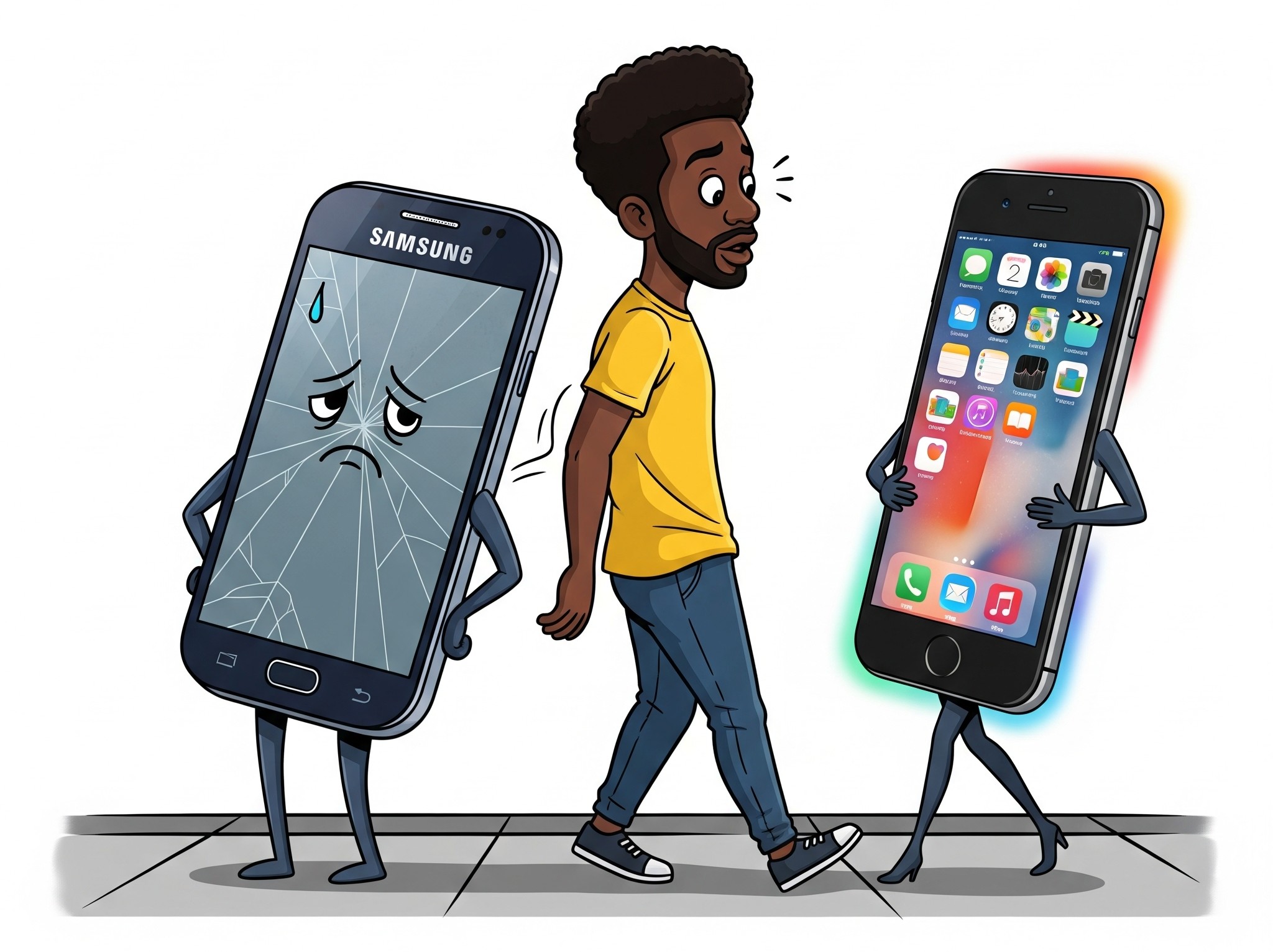Is this the future we want? Is this what our technological advancements have led to? A man got a brain implant to control Amazon Alexa with his mind. It sounds wild when put like that, but the story is actually quite wholesome.
The man in question is 64-year-old Mark, who has a condition that affects the nerve cells in the brain and spinal cord. It’s called ALS, and it causes a gradual loss of muscle control. Mark has limited mobility, especially in his arms and hands.
Mark has been using Alexa with his voice for a while. It was already a huge deal that he could use his voice to shop, communicate with others, turn lights on, watch TV, and perform a host of other tasks Alexa enables.
Remember, Alexa allows people to control smart home devices in addition to handling general queries and shopping, which are more familiar to us.
Mark’s BCI
Mark’s experience is set to improve after he received a brain-computer interface (BCI). Through this BCI, Mark can control devices like a smartphone, tablet, and now Alexa, without any physical interaction.
The beauty of this brain implant is that Mark gains privacy. He no longer has to voice out his search queries within earshot of others. If you think about it, your internet use would change if you had to say out loud, “Subtle makeup tutorials for men.”
You wouldn’t Google the things you wanted to if everyone could hear what you were searching. With the BCI, Mark can just use his brain to navigate the web or shop for adult diapers if he needs them, without anyone being the wiser.
The BCI decodes brain signals and transmits movement intentions to control personal devices. That’s how Mark can turn lights on, watch TV, make calls, and shop.
The BCI was also connected to ChatGPT and the Apple Vision Pro. So, Mark isn’t really missing out on the latest technologies.
Many people are more familiar with Elon Musk’s Neuralink, which has also performed brain implants, but Mark’s was done by Synchron.
The procedure
The BCI is implanted into the brain via a ‘minimally invasive procedure.’ The BCI, developed by Synchron, is about the size of a paper clip (3–4 cm in length).
This means that instead of opening the skull to implant the device directly into the brain, it is inserted through a vein in the neck and guided to the part of the brain responsible for voluntary movement.
This approach significantly reduces the risks and recovery time associated with brain surgery.
Even so, I can’t imagine inserting a paper clip into my neck. To be honest, I’d much rather shout out my embarrassing search queries than have a paper clip inserted into my neck. I say this as someone who’s had a flexible camera inserted through the nose into the throat.
However, I’m probably saying this as someone who still has their motor functions. Maybe I would change my tune if I lost them.
Still not perfect
The BCI isn’t perfect. While it undoubtedly improves Mark’s life, there are still areas that need improvement.
Complex Task Execution: While the BCI allows users to control basic functions, Mark hopes it will eventually enable more complex tasks, such as helping him return to painting, indicating that the BCI’s functionality is still limited in more intricate activities.
Accessibility Issues: Mark mentioned that the experience isn’t always smooth, and he and the team are working through accessibility challenges across different platforms to improve the system for future users.
Platform-Specific Challenges: Each platform, such as Alexa, Apple devices, or ChatGPT, presents its own unique challenges, which need to be addressed to ensure seamless and intuitive user interaction.
Reading minds
I think sci-fi movies have desensitised us to some of these technological advancements. These devices are literally reading minds. The BCI decodes neural signals related to movement intentions from the brain.
It detects electrical signals from the brain region responsible for controlling movement. When a person thinks about a movement, the BCI picks up these signals, transmits them wirelessly, and decodes them into commands to control digital devices, allowing individuals with paralysis to interact with technology through thought.
I can’t wrap my head around this. It still sounds like science fiction.
Would you get this 666-style contraption if injury, disease, or age took your mobility? Or does this get us ever closer to the mark of the beast, if it isn’t that already?
The thing is, the BCI is designed to decode brain signals to control external devices, not to stimulate the brain or body to move limbs. However, in theory, a BCI system could be part of a broader technology aimed at restoring movement to paralysed limbs.
I think we can bet that we’re going to get there. It would be awesome to restore mobility to people via devices like these. However, what if the device malfunctioned or, worse still, was hacked and used to force you to move in certain ways?
That’s me watching too many movies, but it’s fascinating stuff. I can’t help myself.













Comments
15 responses
This is pushing it
They need to push it a little farther 😂
Holy this is wat i wanted to here give me one of those bad boys . Wish they can make them like glasses of headphones
You can’t wait for one of these huh? So would you get one if it entailed a brain implant or you’ll wait till you can get the same functionality from glasses or headphones?
Why not just create robots to work like
Humans because Humans are already perfect as they are…..seems like the devil is pushing real hard.
There’s stuff that a robot can’t do for you with any privacy. Besides, if you lost your voice in addition to motor function, how would the robot know you wanted the light turned on or the heat turned down a bit if it couldn’t read your brain waves? A brain implant is necessary for that.
I’m with you though on not wanting one of these inside me. No thanks. I’d rather have to forgo privacy to get things done.
imagine having ads poppin up while you got an implant 😂
Kkkk… Hilarious!
🤣😂🤣 I had not considered it but you’re on to something. There definitely will be ads, everything else has them, why would this be any different.
😂😂😂😂😂
The end of cell phone devices is nigh as this technologywill enable direct mind-to-mind connections one of these coming days. Come to think of it, human bodies will actually become obsolete a human brain can be kept alive and connected to the outside world through the BCI. The Matrix is evolving and becoming a reality during our lifetimes..
What if the user gets demented ?
Seeing that since 2010, technology has slowly been controlling people’s minds, I just see this as a step further into mind control. These guys have opened Pandora’s box, they have dissected the human thought processes and I don’t think I can trust them with my brain.A dystopian future in which we become mind controlled Zombies is right around the corner.
Advances in technology can be scary to conservatives, however, a person in need of such technology cant be thankful enough. Think Stephen Hawking. If you lost an eye wouldnt you accept a bionic replacement if it meant you restored 2020 vision. Resistance is fueled by fear and fear inturn fueled by ignorance. The reason we do not have gvt policies pushing for the adoption of crypto currencies, gvt doesnt understand crypto.
You put to much faith in people you don’t know. Capitalists don’t do these things for the good of some guy out there. Nah that’s just for marketing. Just try to think of the evil these guys could do with that technology and you will see that it outweighs it’s benefit. I bet you nuclear energy has its advantages but look at what happened in Nagasaki and Hiroshima.If war erupts and these guys have this technology it could spell doom for a lot people. Imagine brain controlled rockets and missiles.